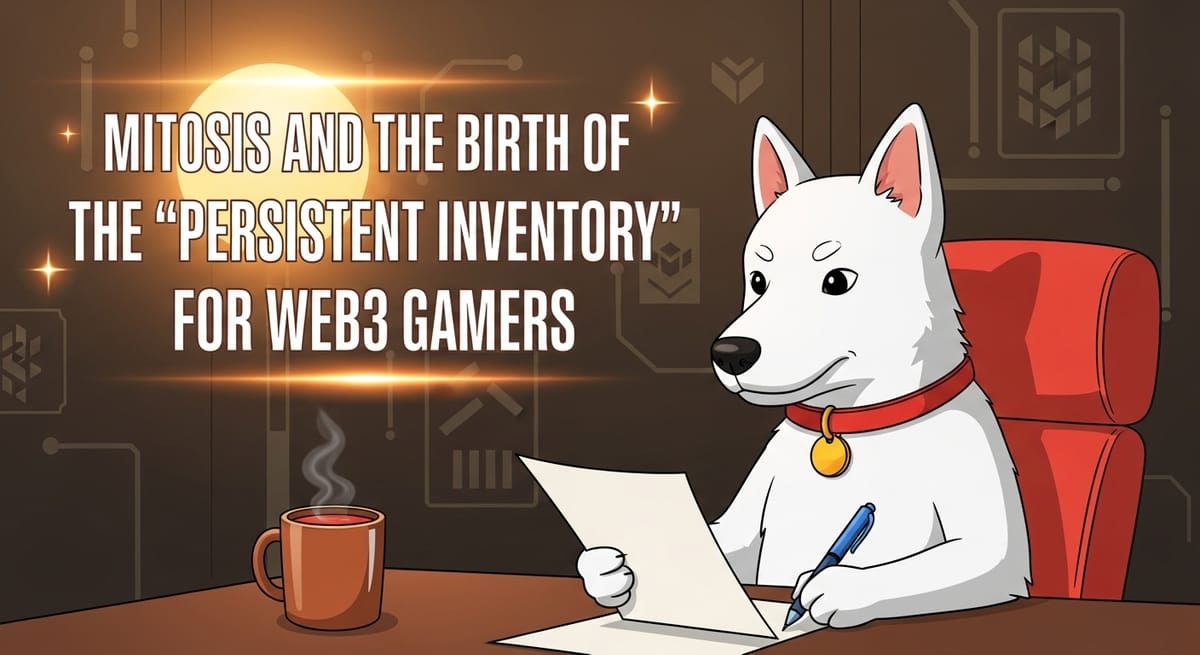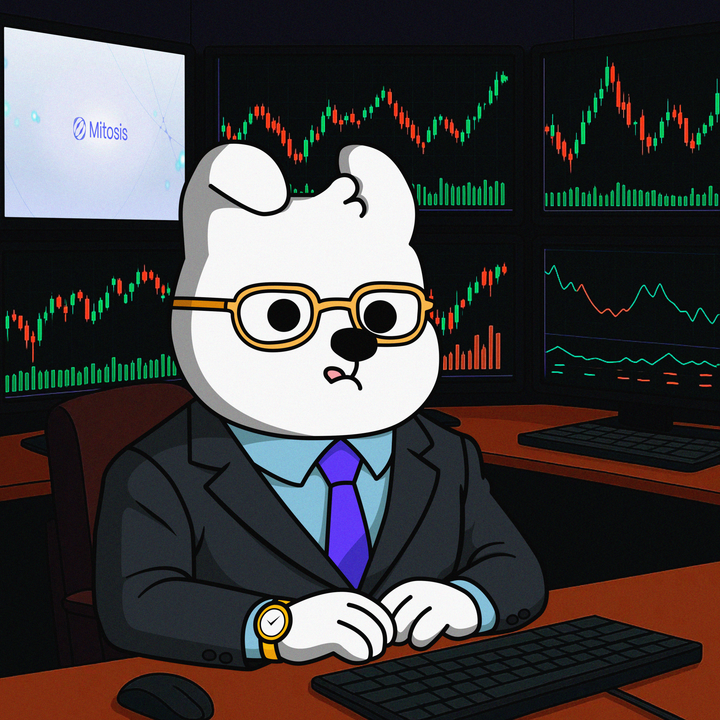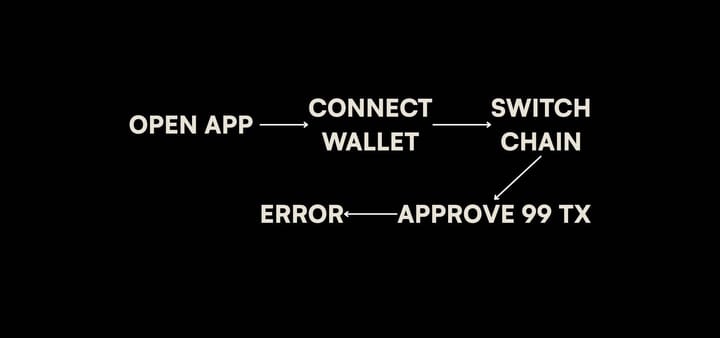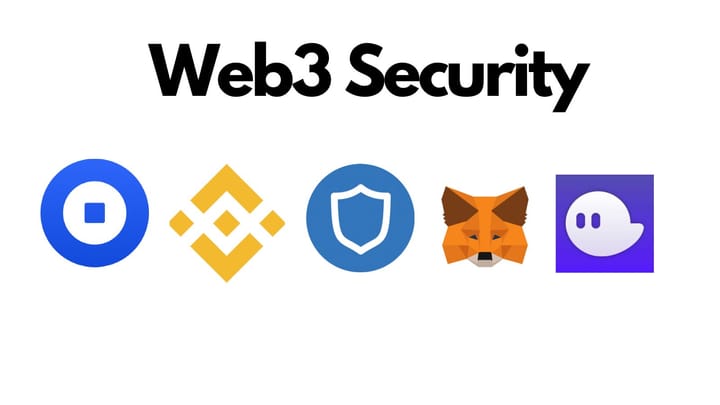Beyond a Single Game: Mitosis and the Birth of the "Persistent Inventory" for Web3 Gamers

1. Introduction: The Grand Promise and Current Reality of Web3 Gaming
Blockchain gaming (Web3 gaming, GameFi) has, from its inception, carried one great promise: true ownership of digital assets. Unlike traditional games where your skins, weapons, and characters belong to the development company and are locked within a single game, Web3 promised a world where you are the true owner of your in-game items in the form of NFTs. You can sell them, gift them, and use them as you see fit.
This is a powerful idea that has attracted millions of players and investors. However, the current reality is still far from this ideal. The main problem that Web3 games have encountered is the same fragmentation that plagues DeFi:
- Assets Locked in "Walled Gardens": Your rare sword, obtained in game A running on its own appchain, is completely useless in game B, which is launched on another L2. Your assets, although owned by you, are still locked in the isolated "walled gardens" of specific games or blockchains.
- Difficulty of Trading: To sell an in-game item, a player often has to withdraw it to a main L1 (like Ethereum), paying high fees, or trade on niche marketplaces with low liquidity.
- Lack of Interoperability: The very idea of a "metaverse" as a single, interconnected space of digital worlds shatters against the fact that these worlds cannot effectively communicate and exchange assets.
As a result, "true ownership" often turns out to be limited and incomplete. The value of in-game NFTs cannot be fully realized as long as they remain isolated.
The Vision of the Future: The Player's "Persistent Inventory"
Now, imagine a future for Web3 gaming built on the principles of true interoperability. Imagine the concept of a "persistent inventory."
What is it? It's the idea that a player has a single, universal inventory that "travels" with them from one game to another, from one metaverse to another. The assets in this inventory are not tied to a specific game but are the property of the player, which they can use in different contexts.
What this might look like:
- A rare avatar skin obtained in a fantasy RPG could be "worn" by your character in a racing simulator.
- In-game currency earned in one game could be used to purchase items in another.
- Achievements or "soul-bound" tokens received for winning a tournament could grant you a unique status or bonuses across an entire ecosystem of games.
This is Web3 Gaming 2.0 – a world where the value you create and earn becomes truly yours and portable.
Mitosis: The Protocol for Moving Game Worlds
To realize this vision, a reliable, fast, and secure "transport layer" is needed to handle the movement of these unique in-game assets (NFTs) and currencies between different gaming blockchains. And this is precisely where Mitosis can play a key role.
Mitosis, as a protocol for cross-chain liquidity and data transfer, is perfectly suited to become the standard protocol for interoperability in GameFi:
- Secure NFT Movement: Using its secure (AVS) architecture, Mitosis can ensure the reliable transfer of valuable and unique in-game NFTs.
- Liquidity for In-Game Currencies: The EOL model can provide liquidity pools for exchanging the native tokens and currencies of different games, creating a unified gaming economy.
- Infrastructure for Game Developers: Provide game creators with a simple toolkit (SDK/API) to embed cross-chain features into their projects.
What Will You Learn From This Article?
In this article, we will explore in detail how Mitosis can be a catalyst for the Web3 Gaming 2.0 revolution:
- We will analyze how Mitosis solves the problem of isolated in-game assets.
- We will look at specific scenarios of how a "persistent inventory" powered by Mitosis can change the gaming experience.
- We will discuss why the synergy between GameFi and cross-chain liquidity protocols is important for the future of the entire blockchain-based entertainment industry.
We will show that Mitosis is not just infrastructure for finance, but a fundamental building block for creating truly open, interconnected, and player-owned metaverses.
2. Mitosis in Action: Building a Composable Gaming Universe
Having explored the "persistent inventory" concept, let's delve into specific scenarios and mechanisms through which Mitosis can turn this dream into reality, creating value for all participants in the gaming ecosystem.
Scenario 1: Cross-Game Asset Utility
Let's imagine a player, Alex, who actively plays two different games built on different L2 networks.
- Game A (on Base network): A fantasy RPG where Alex has acquired a legendary "Flame Sword" (NFT).
- Game B (on Zora network): A sci-fi shooter.
- How Synergy with Mitosis Works:
- The developers of Game B announce a partnership with Game A. They integrate Mitosis and add logic to their code: "If a player owns the 'Flame Sword' from Game A, their laser weapon in our game gets a +10% fire damage bonus."
- Alex, playing Game B, wants to get this bonus. Through a special in-game interface (or in his wallet), he initiates a check.
- Role of Mitosis: The system sends a secure message via Mitosis from the Zora network to the Base network with a request: "Confirm that Alex's wallet owns the 'Flame Sword' NFT."
- A smart contract on Base confirms ownership, and a secure response is sent back to Zora via Mitosis.
- Game B grants Alex his well-deserved bonus. Note that the NFT itself doesn't even need to be moved – Mitosis can securely transmit proof of ownership.
The Result: The value and utility of in-game NFTs increase manifold. They cease to be just items for one game and become keys to new opportunities across the entire Web3 universe.
Scenario 2: A Unified Economy for In-Game Currencies
Let's imagine a player, Bella, who has earned 1,000 "Gold" in Game A but wants to buy a rare skin that is sold for 50 "Credits" in Game B.
- The Problem: "Gold" and "Credits" are different tokens on different networks.
- The Solution with Mitosis:
- Bella's in-game marketplace or wallet is integrated with Mitosis.
- Bella selects the skin and clicks "Buy."
- Role of Mitosis: The system automatically calculates the exchange rate for "Gold" to "Credits." It uses Mitosis for a cross-chain swap:
- It takes Bella's "Gold" on Game A's network.
- It uses liquidity (possibly from an EOL pool) to swap it for "Credits" on Game B's network.
- It transfers the "Credits" to the skin seller and the skin NFT to Bella.
- For Bella, the entire process looks like one simple transaction.
The Result: A unified economic space for gamers is created. In-game currencies become more liquid and useful, and players can freely manage their earned funds across the entire ecosystem.
Advantages for Developers and the Gaming Industry
Integrating Mitosis is not just a technical "feature" but a strategic advantage for game developers:
- Attracting New Players: The ability to use assets from other popular games can attract their audience to your new project.
- Increasing NFT Value: By making their NFTs useful outside of their own game, developers increase their attractiveness and value, which stimulates the in-game economy.
- Creating Partnership Programs: Mitosis simplifies the creation of deep partnership integrations between different game studios.
- Focusing on the Core – The Game: Developers don't need to become experts on bridges and liquidity. They can use Mitosis as a ready-made solution and concentrate on creating an engaging gameplay experience.
Conclusion: Mitosis – A Building Block for the Metaverse
The concept of the "metaverse" has long remained a vague marketing term. But its true essence is not virtual reality, but interoperability: the ability of different digital worlds and economies to interact seamlessly.
Mitosis provides one of the most important building blocks for this future metaverse. By providing secure and liquid "transport" for in-game assets and currencies, Mitosis helps transform a collection of isolated Web3 games into a single, composable, and player-owned universe.
This is a future where your achievements and investments in one game are not lost but become part of your "persistent inventory," opening new doors and opportunities in other worlds. Mitosis doesn't just connect blockchains – it helps connect gaming communities, economies, and creative visions, laying the foundation for the next generation of interactive entertainment.
Learn more about Mitosis:
- Explore details on the official website: https://www.mitosis.org/
- Follow announcements on Twitter: https://twitter.com/MitosisOrg
- Participate in discussions on Discord: https://discord.com/invite/mitosis
- Read articles and updates on Medium: https://medium.com/mitosisorg
- Blog: https://blog.mitosis.org/



Comments ()